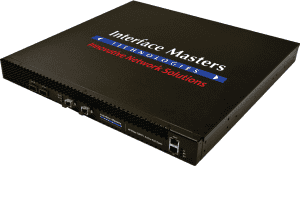Many business execs still scratch their heads when it comes to their disaster recovery (DR) or business continuity strategy – or lack thereof. However, having uncertainty as to where to start should not get in the way of ensuring that your DR plan is full-fledged and bullet proof – especially when the financial and reputational consequences are harrowing. So, just how expensive is even a single bout of downtime? According to a recent Forrester survey, the hourly cost of downtime for a typical company can range anywhere from $10,000 to $1 million. These astronomical figures may seem unrealistic, but big name companies prove that this possibility is all too true.
Amazon’s recent August 2013 outage is the perfect example of this. The company was down for only 30 minutes and, during that time, was predicted to have lost over $66,000 per minute. The e-commerce platform has gone black before this unfortunate incident, too. Back in June 2008, Amazon experienced an outage that cost it nearly $31,000 per minute based on its previous quarter’s revenue.
In addition to profit loss, let’s take a look at some other implications of downtime:
Bad Press: Nothing puts a dent in a company’s credibility like experiencing downtime or slow Mean Time to Recovery (MTTR), as recently evidenced by the HealthCare.gov debacle. “There’s no sugar coating it. The website has been too slow. People have been getting stuck during the application process. And I think it’s fair to say that nobody’s more frustrated by that than I am,” President Obama explained, making it loud and clear that performance glitches do not discriminate, even when it comes to the government.
Loss of Faith: Just how reliable will your company appear to your internal partners and external stakeholders once your company goes down and cannot get back up? For example, when Amazon experienced downtime this past summer, several companies that use its AWS cloud-computing hostingservice were brought down right along with it, including Reddit, Foursquare and Netflix.
To combat downtime and its associated dangers and costs, many companies have been casting an eye toward bypass switch technology as a dependable way to keep networks up and smoothly running – even if WAN optimization fails. A bypass switch is a hardware device that provides a fail-safe, permanent and hassle-free port for in-line network security and monitoring devices. The technology goes hand-in-hand with Distributed Denial of Service attacks, which makes a machine or network irretrievable from its user while a hacker attempts to steal its resources. A bypass switch does just what its name implies; it enables companies to ensure maximal uptime in their network if their inline monitoring appliances go down.
Many businesses don’t get back up after experiencing a major disaster. There are clearly financial as well as reputational consequences and costs of ignoring the importance of downtime. There’s no better time to evaluate whether your existing DR strategy needs a lift with bypass switch technology.
Interface Masters Technologies has for over 20 years been providing off-the-shelf innovative network security solutions with customization services to OEMs, Fortune 100 and startup companies. Our headquarters are located in San Jose, California in the heart of Silicon Valley where we are proud to design and manufacture all of our products. Based on MIPS, ARM, PowerPC and x86 processors, Interface Masters appliance models enable OEMs to significantly reduce time-to-market with reliable, pre-tested and pre-integrated networking solutions that can meet the most challenging security requirements.


